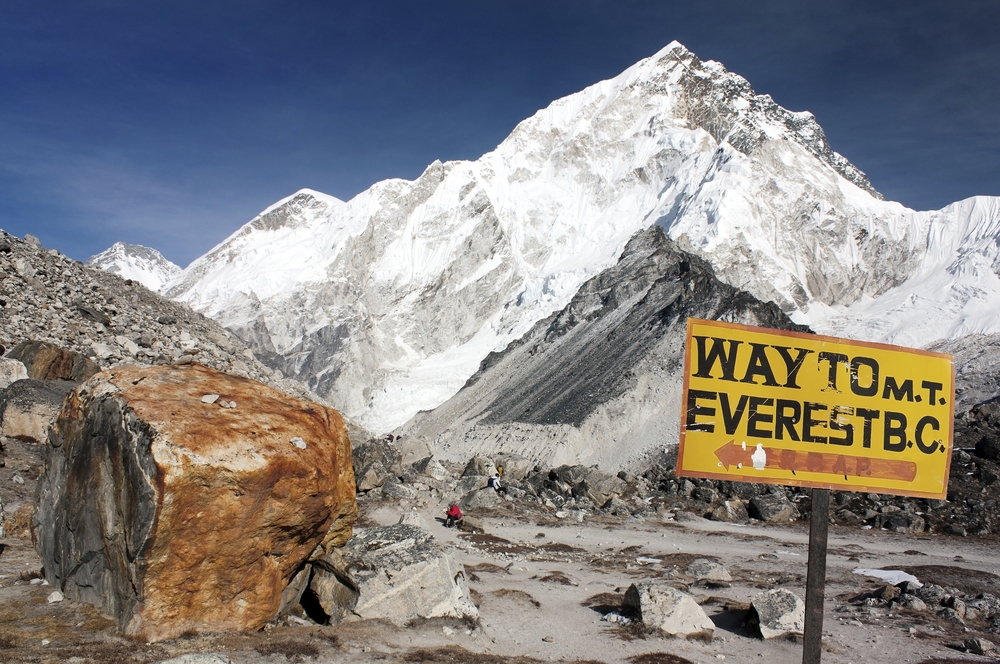This blog is an excerpt from GovLoop’s recent guide, Cybersecurity, Analytics & More: The 8 Government Health IT Trends You Need To Know. Download the full guide here.
Health IT, precision medicine, and genomics are a lot like climbing Mount Everest. Climbing the mountain the first time takes a lot of time, money, and other resources, but once the summit has been scaled, future climbers can work to make the process easier and achieve new goals that would have at one time seemed impossible.
Additionally, precision medicine and genomics once required a significant initial lift, but advances today in science and technology are making these approaches more common. Cloudera, a leader in big data management and analytics that has made a significant investment in President Obama’s Precision Medicine Initiative, is helping make the climb even easier.
To understand more about precision medicine’s climb up Everest, GovLoop spoke with Shawn Dolley, industry leader, Health and Life Science at Cloudera, about the progress genomics and precision medicine have made and what the future holds for the field.
One reason such advances in genomics are happening today is thanks, in large part, to advances in big data. Dolley said the first attempts to catalog a genome marked “the first shovel hitting the ground of the biggest dig of our lifetimes.” Genetic sequencing has since become cheaper and faster, and much has changed from those initial sequencings, including updated biological methods of sequencing and greater innovation in how we understand genomic data. That innovation includes the development of bioinformatics, the use of technology to manage biological information.
One of the biggest challenges for bioinformaticians had been dealing with vast amounts of genomic data – the volume of genomic data is expected to reach two to four exabytes per year by 2025. However, the explosion of big data and the tools to handle and analyze it have made this obstacle more manageable and thus, laid the groundwork for the strides being made in precision medicine today.
While health IT may have the tools to handle big data now, health researchers don’t always know how to implement these solutions. That’s where Cloudera comes in. They’ve announced plans to train 1,000 precision medicine researchers in relevant big data and data science technologies and make significant invest- ments in software, training, and services across fifty organizations over the next three years. With this move, Cloudera hopes to change the conversation about what is technically possible, what teams can afford with existing budgets, and how to collect, store, and analyze data. The goal, Dolley said, is to bring clinicians and researchers together, giving them an op- portunity to share bodies of knowledge, foster collaborative innovation, and drive toward higher standards of care.
Though huge advances have been made in terms of the use and implementation of big data analytics for health IT, security remains a major concern for genomics and precision medicine because health data often contains personally identifiable information. HIPAA produced a framework and standards for security in the United States, and Cloudera seamlessly incorporates those standards into their technology suite. “Cloudera has made investments in a technology suite that can be turned on and configured to be HIPAA compliant without having to use any other tools,” Dolley said. “IT folks in bioinformatics don’t want to have to talk to other companies and fit a bunch of tools together.” This native compatibility has helped Cloudera become dominant in the health IT sphere.
With all of these new technologies, precision medicine can change how we view healthcare. According to Dolley, signal detection – or deriving insights and patterns from data – is a “boots on the ground problem for the most part,” as it is often difficult to get usable datasets at the ground level. However, researchers already have the tools needed to analyze the data. Once technology makes it easier to obtain usable datasets from all environments, researchers can begin to identify actionable insights based on the information.
Big data has ushered in a renaissance of clinical prediction. For example, hospitals can analyze patient data and understand why some patients are returning frequently. This type of predictive analysis can help them reduce cases of readmission by targeting care and resources. Similarly, as precision medicine gathers more genomic data, it builds a real-world evidence database for clinical trials and other research.
Dolley imagines a great future for genomics and precision medicine. “We’re no longer really wondering how we’re going to get a thousand people to the top of Everest; we know how we’re going to do that,” he said. “Now we’re working on skiing down Everest and making it accessible to everyone.” With further advances in analytics, technologies, and collaboration, the only thing we will need is to ask the right questions.
Download the full guide here.






Leave a Reply
You must be logged in to post a comment.